This article was co-authored by Supatra Tovar, PsyD, RD. Dr. Supatra Tovar is a Licensed Clinical Psychologist (PSY #31949), Registered Dietitian, Fitness Expert, and the Owner of Dr. Supatra Tovar and Associates. Dr. Tovar has worked in the fields of health education, clinical dietetics, and psychology. With over 25 years of holistic wellness experience, she practices Holistic Health Psychotherapy. She combines her psychology, diet, and fitness knowledge to help those struggling with depression, weight gain, eating disorders, life transitions, and relationships. Dr. Tovar holds a BA in Environmental Biology from The University of Colorado Boulder, an MS in Nutrition Science from California State University, Los Angeles, and a PsyD in Clinical Health Psychology from Alliant International University, Los Angeles.
There are 12 references cited in this article, which can be found at the bottom of the page.
wikiHow marks an article as reader-approved once it receives enough positive feedback. In this case, several readers have written to tell us that this article was helpful to them, earning it our reader-approved status.
This article has been viewed 207,957 times.
It can be difficult for a parent to determine the best way to manage their child’s unwanted behaviour. This can be even more difficult when the child is autistic. It is important that as a parent of an autistic child, you recognise that discipline is more than just punishing a child for “naughty” behaviour, but modifying bad behaviour into something more constructive.
Steps
Approaching Discipline in a Child-Centered Way
-
1Don't forget that, above all else, an autistic child is a child. Any given child has their own preferences, quirks, behaviors, and reactions. Any child has things they don't like, and things they do. Being autistic doesn't change this. Any discipline techniques you use should approach difficult behavioural situations with understanding. Focus on providing your child the support they need to control themselves and turn "naughty" behaviour into more constructive actions.
- All kids misbehave sometimes. They may break rules (accidentally or on purpose), and have trouble controlling themselves when they're upset. It's important to be understanding but firm in teaching them how to behave better.
- Remember to be fair. It's not right to punish a child for "acting autistic" (like stimming or avoiding eye contact), nor is it fair to punish an autistic child (or any child for that matter) for breaking rules that other kids can get away with breaking.
-
2Be patient. While at times you may become frustrated when trying to understand your child’s behavior, it is important to remember that patience is key. With time, with use of the strategies covered below, your autistic child will learn better ways to behave. This won't happen overnight.
- Remember that autistic children experience extra challenges. Sensory issues, communication difficulties, strong emotions, and other issues can be very frustrating to handle.
- Keep in mind that autistic children's listening body language may look different from the listening body language of non-autistic children. Stimming, looking in other directions, and not appearing to respond doesn't necessarily mean that they aren't listening.
Advertisement -
3Stay positively focused. Discipline should be focused more on encouragement and praise, not punishment. Your job is to teach them how to behave well, and then praise them as they learn it.
- Try talking to a therapist if your techniques don't seem to be working.[2]
-
4Handle meltdowns with care. A lot of what you might think of as "bad behaviour" in autistic children comes in the form of meltdowns. This can be particularly difficult to react to with younger children or others who don't use verbal communication to express when they're upset. What may look like a "bad behaviour" tantrum in some can actually be an attempt to express their needs, deal with unsettling sensory experiences, or handle stress.
- Ideally, you want to create a plan to help teach the child to avoid meltdowns themselves. Classic "disciplinary" tactics that focus on punishment, like time-outs, can make things worse by upsetting the child further and removing any sense that they have control over their decisions. Instead, teaching a child to take a “break” and introduce self-calming techniques empowers the child to manage their time and emotions and encourage the child to self-regulate.
- Our articles on How to Deal with Autistic Children's Meltdowns and How to Reduce Meltdowns and Tantrums in Autistic Children can offer more detailed advice on helping reduce and manage meltdowns.
-
5Keep a calm voice and demeanor. Shouting and power struggles can make children anxious and confused. Anxiety can make children become even more agitated, and they may act out by crying, screaming, shouting, or self injuring. Your goal is to calm the child down. Keep an even and low voice, even if you feel frustrated.[3]
- It is okay to buy yourself time. Try saying "I'm really frustrated. I need some time to figure out what I'm going to do about this."
Creating Routine to Reduce Discipline Needs
Consistency both in everyday life and discipline helps children know what to expect, and is an important part of being an effective parent.
-
1Set a predictable routine and structure. Autistic kids often feel more secure when they can predict the day's activities and make sense of the world. Create set places where activities occur. This can help the child stay calm and feel in control of things.
- Routines also make it easier to narrow down why the child might be acting out. For example, if they always cry when you ask them to do homework after school, it might be that school tires them out too much and they need to relax first, or that homework is a source of major stress for them.
-
2Use "picture schedules" to create order. Picture schedules help to explain which activity the child will do next. Picture schedules are wonderful tools parents can use to help guide some autistic children through different activities they will undertake during the day. It helps improve structure in a child’s life particularly because autistic children often have difficulty keeping an overview of their daily activities. Some ideas for ways to use picture schedules include:[4]
- You and your child can keep track of tasks by “ticking off” completed activities.
- You and your child can keep a clock or a light-up timer near the activities to determine the time frame for each activity (if this helps the child).
- Help your child to design and draw these pictures so they feel more of a connection with the images.
- Keep the images in a book or on a board or wall so that your child can refer to them whenever they please.
-
3Be consistent with the schedule. This helps the child feel secure. If a change needs to be made, give the child warning and an explanation, so it feels less jarring. Work together with other caretakers (such as teachers and therapists) to create a consistent system.[4]
-
4Adapt the schedule in small ways as your child grows. While the schedule should remain relatively consistent, this does not mean there is no room for development of your child’s activities and discipline as your child makes their natural progression in development and growth as an individual.
- For example, bath time may turn into shower time once your child learns to shower independently.
- Make changes to help fix issues as needed. For example, if you schedule exercise time after lunch, and the child often gets a stomachache during exercise, it might be that they need time for the food to settle. Talk to the child about the schedule issue, and brainstorm how to rearrange things (like exercising before eating, or having 30 minutes of free time in between).
-
5Plan lots of time for your child to relax. Autistic children can be especially vulnerable to stress, so it's critical for them to get enough "down time." Down time is particularly relevant when your child feels there is too much going on and their senses have been overloaded. When your child becomes distressed or upset because of this over-stimulation, this indicative of the need for down time. Simply take your child to a safe, quiet place and allow your child to ‘relax’ in a simple environment under casual supervision.
- Try to plan relaxation time after activities that tend to be stressful. For example, if the child usually comes home from school stressed or tired, then they should have at least half an hour of free time to unwind.
- If the child isn't old enough to go unsupervised, you can offer casual supervision. For example, the child could rock back and forth and draw pictures in a corner, while you read a book or do something on your phone.
-
6Schedule plenty of time for fun. Autistic children, just like other children, need time to play and enjoy activities of their own choosing. Since stress can be a problem for autistic kids, relaxation time is especially critical. Self-directed play helps the child stay happy and emotionally balanced.
- Keep in mind that your idea of "fun" might be different from the child's idea. For example, a noisy party might be stressful for an autistic child. And lining up toys or walking in circles might be an enjoyable way for an autistic kid to spend time. If the child likes it, then it counts as fun, even if you don't understand it.
- Being bossed around by an adult usually doesn't count as fun, even if the adult is telling the child to play. If you play with the child, let them take the lead.
-
7Plan some outlets for energy, especially if the child has hyperactive tendencies. Some kids can't stay sitting or doing the same thing for very long. If this is the case for your child, make sure to schedule plenty of time for them to "blow off steam" and use some of their excess energy. Sports and playing outside are often good for active kids.
- You can also announce unscheduled breaks if you see the child getting antsy. For example, you could say "I can see you're having a hard time focusing. Let's run around for 15 minutes, and then come back."
-
8Resolve any sleep or medical problems. If your child is not getting sufficient sleep or is suffering pain or ill health, it would be natural for them to express their distress which may be misconstrued as “problematic behaviour”.
- If you notice behavior focused on a particular area, try having a doctor check that area. For example, a boy who hits his head might be suffering from a toothache or lice. Hitting a body part can indicate that something is wrong there.
Preventing Behavior Problems
Praise, forward thinking, and a positive attitude can help reduce issues with behavior.
-
1Be a good example. Children look at adult role models to help them understand how to behave. Demonstrate good behavior in your actions, even when you aren't sure the child is watching.
-
2Make sure to give your child plenty of positive attention. If kids feel neglected, they may act out in the hopes you'll pay attention. You can reduce the chances of this happening by making sure that they get positive attention without needing to resort to bad behavior.
- If you think that the child is seeking attention, work on teaching them assertiveness skills. Teach them phrases like "I'm lonely," "I want attention," or "Will you hang out with me?" Reward this behavior by paying attention when they say this. That way, they learn that asking for attention is more effective than acting out.
-
3Talk to the child about ways to handle emotions. Kids may not know how to recognize and cope with their feelings. Autistic kids may need extra guidance. Listen to them and acknowledge their feelings, but stay firm in your rules.
- Talk about characters. Feel free to ask questions like "What do you think he should have done to handle his anger, instead of yelling?"
-
4Remove a child from a stressful situation if you can tell they are struggling. If you can tell that the child is reaching their boiling point, get them out of the situation. You might suggest that they leave, or you could assign them a solitary task that you know is very easy or enjoyable for them. This way, they can take time to calm down and re-center themselves.
- "You look stressed. Why don't you go to your corner for a while? We can finish your homework in half an hour from now."
- "It's a nice day. Ella, will you go get the mail for me?"
- "The dog hasn't been walked yet. Will you please go walk him?"
- "Justin, I think we might be running low on toilet paper. Will you go to the bathroom and count how many rolls there are? Here's a post-it and a pencil so you can write things down if you want."
- "I can see you getting frustrated. Let's take a 10 minute break and then come back to this. Sound good?"
-
5Try redirecting an antsy or agitated child. Kids get restless sometimes, and that can lead to less-than-ideal behavior. Here are some examples of things you could say:
- "Are you bored? Would you like to draw some pictures with me?"
- "We have 3 more aisles left in the store. Will you count them with me?"
- "I can tell you have lots of energy right now. I'm going to start running! I bet you can't catch me!"
-
6Don't stress about the small things. Autistic kids are going to be quirky, and that's okay. And all kids have bad moods and bad days, just like adults do. You don't need to turn every instance of unusual or imperfect behavior into a battle. Make peace with imperfection.
-
7Make sure your expectations are reasonable. Autistic kids have developmental delays, and that means they'll be slower to learn certain things sometimes. If they're repeatedly failing to meet your expectations, it may be that your expectations are too high, or that something else is getting in their way. Try talking about the issue with...
- The child (e.g. "Why do you think chores are so hard for you?")
- Other caregivers (of your child, and of autistic/disabled kids in general)
- Teachers
- Therapists
- Autistic adults
-
8Praise the child for positive behavior. Offer praise when the child does something well. This makes the child feel like you notice their efforts, and makes them feel proud of themselves and eager to keep behaving. Praise can be a strong motivator. Try to find something good to praise at least twice a day, if not more. Say things like...
- "Thank you for putting away your toys so quickly! I'm really impressed."
- "Good job being so gentle with your baby brother! You're such a good big sister."
- "Thank you for listening to me on the first try. That was really cool."
- "Wow, you are studying really hard! That's a sign of a good student."
- "I'm proud of you for being so assertive with me today."
-
9Explain the relationship between good behavior and its positive consequences. This helps motivate the child, and teaches them why the behavior matters. If you want, you can also explain a reward that is linked to the good behavior.
- "When you pick up your toys, your floor is a clean place to play. Everyone can walk and move around easily, and your room can be a fun place to hang out."
- "When you're gentle with the dog, it makes her enjoy spending time with you. She might even come to you more often, because she knows you will treat her gently."
- "It makes me happy when you listen to me on the first time I give you a reminder. It lets me know that you do listen to me, and it means I don't have to think of a punishment for you. I like it when that happens."
- "When you use your inside voice, it makes it easy for your brother to study and your mom to get work done. People enjoy having a quiet house. It is nice for all of us."
Using Specific Discipline Strategies
-
1Work on calming the child first, if needed. If the child is screaming, crying, or otherwise acting upset, then calm them down. You can administer discipline once they are clear-headed enough to listen to you.
- Don't give up when a child misbehaves. Clearly explain that it is counterproductive. For example, "I can't understand you when you shout. You can take some deep breaths, and then use your inside voice to tell me why you're upset."
- Patiently remind the child of self-calming strategies to use, such as taking deep breaths and counting. Offer to use the strategies together.
- Try validating their feelings and letting them know that you care (even if you can't honor their requests). Children can calm down quickly once they know that you are willing to listen and empathize.
-
2Give positively-worded reminders when you see a child acting out. Kids, especially little kids, have limited memory and impulse control. This means that they might forget to follow the rules sometimes. A reminder may be enough to correct them, without punishment being necessary. Tell them what you expect them to do. For example, "Walking feet, please" is more helpful than "No running," because it encourages the child to visualize good behavior. Here are some examples:
- "Please slow down so you don't slip and fall."
- "Inside voices, please. Mommy is trying to read."
- "Be assertive, please. I can't help you unless you tell me what's wrong. You can talk to me, or use your tablet to show me."
- "Hands to yourself. You can grab a fidget toy if you want to fidget."
- "Be gentle with the cat."
-
3Give a warning if they don't listen to your reminder. If the child refuses to correct their behavior after your reminder, then warn them that there will be consequences if they continue. This gives them a final chance to stop and follow the rules.
- "You need to be gentle. If you don't stop, I will take the toy away."
- "I'm going to count to 3. By the time I reach 3, your hands need to be out of her hair. One..."
- "Inside voices are important. If you cannot watch TV quietly, then I will turn off the TV."
- "Video games come after your homework. If you don't do your homework, then there will be no video games."
-
4Give immediate consequences if they refuse to adjust their behavior. If a reminder and a warning don't work, then you may need to follow through with a punishment. Administer the consequences right away. (Waiting can make it less effective.)
- If you wait too long to administer the punishment, it won't be effective, because the child may not connect the punishment to the misbehavior. In that case, it's better to just let it go this time.[5]
- If your child learns well through visual tactics, create a series of pictures that explains how their bad behavior leads to punishment and good behavior leads to rewards. Doing this will help your child understand the relationship between misbehavior and discipline.
-
5Tailor the punishment to the infraction. Do not rely on one single punishment or type of punishments. Minor misbehavior should only result in a minor punishment (or just a warning), while major misbehavior might need to result in a more serious punishment. Figure out what works best for the child.[11]
- Give a verbal warning to give them a chance to correct themselves. (If they listen, then you don't need to punish them.)
- Try natural consequences—if the child throws their toys, they must pick up the toys or lose access to the toys for a few minutes.
- Consider loss of rewards or privileges, such as no TV time. (Make sure that this does not interfere with their special interests, as this may cause too much distress to be effective.)
-
6Stay consistent. The child needs to understand that bad behavior will have consequences, and that it won't change based on who is misbehaving or who is supervising them.[7]
- Give the same punishment for the same infraction every time.
- Apply the same rules to all the members of the family, including the child, siblings, and even the adults. (If you break a family rule, then you might have to punish yourself.)
-
7Avoid punishments that cause physical pain, such as spanking, slapping, or exposure to intense stimuli. Responding to violence with more violence can reinforce in your child that it is okay to become violent when feeling upset. If you are very angry with your child, perform the same self-calming strategies that you would like your child to use. This encourages the child to mimic you when they feel angry or frustrated.
- While spanking may alleviate stress for the parent, research shows that it stresses out the child and causes them to act out more and listen to you less.[8] [9] It can also lead to other issues later on, such as mental health problems, impaired cognitive development, and worse relationship skills.[10] [11] [12] [13] Parents can learn more effective techniques to make life easier for both parent and child.
-
8Criticize the behavior, not the child. Avoid labeling the child as “bad’ or “wrong”. Point out the incorrect behaviour to the child in an encouraging way to promote corrective action. For example, say to them:
- “I can see you’re really upset about that. Yelling won't help. Would you like to do some deep breathing with me?"
- “Why did you throw yourself on the ground? Were you upset about the grocery store?”
- “Hitting other people is never okay. If you're angry, use your words, tell an adult, or take a break to cool off.”
- "I love you, but I'm not happy with how you handled that situation. You need to do better next time. Let's talk about this."
Creating a Reward System
-
1Create a reward system that directly relates to good behavior. Similar to punishment, your child needs to have an understanding that as a direct result of their appropriate behaviour, they receive a reward (such as praise or gold stars). This, over time, creates behaviour modification and can help discipline a child.
-
2Try using activities as rewards from time to time. Write a list of things that the child loves to do. You can suggest these rewards when your child behaves well, or when they stop doing a bad habit.
- Though this may initially sound like a “bribe”, it is in fact not so when applied correctly. The application of the reward system needs to be based on rewarding the correct behaviour, not for stopping bad behavior.
- Use this technique casually and sparingly. For example, "I'm really proud of how you handled yourself in that noisy store. We have some free time this afternoon. Would you like to read picture books with me?"
-
3Be open to new ideas about disciplining and rewarding your child. Each child is different and each autistic child is different. What may be considered a punishment or “boring” for one child could be the ultimate reward for an autistic child, and vice versa. Therefore, it is essential to be creative and open to new ideas about both punishment and reward concepts in the area of discipline.[14]
- Qualification: always think carefully about discipline before implementing it. Would you be comfortable doing the same thing to a non-autistic child? If not, then that discipline practice may do more harm than good.
-
4Set up a reward system. There are several ways you can do this, but two of the top reward systems include:
- Creating a behaviour chart in which good behaviour is rewarded through a sticker or mark on the chart. If the child receives enough marks on the chart they get a reward. Offer to involve your child by letting them place the sticker.
- Token reward systems are a very common system that is implemented. Essentially, good behaviour is rewarded with a token (sticker, a chip etc.). These tokens can then be changed at a later time for rewards. This system is often designed through a contract with the child as to their behaviour and as such can be difficult to implement for much younger children.
-
5Praise your child. Speak clearly in a quieter tone when rewarding your child. Being too loud can overstimulate or upset them. Praise the effort as oppose to the outcome. This includes praising them for working towards achieving a goal. Recognising your child’s persistence and efforts is of more value to your autistic child than the result.
- If your child doesn't understand spoken words, add a small reward with your praise.
- Showing sincerity and delight in your child’s correct behaviours increases the frequency of those behaviours.
-
6Give your child sensory rewards. These are sometimes more difficult to administer as rewards, but a great reward includes one that also correctly promotes sensory activity. However, be careful not to overstimulate your child, as this may upset them. Rewards could include:
- Sight: Something the child likes to look at e.g. a new library book, a water fountain, animals (fish especially are good), or watching a model airplane fly.
- Sound: soft calm soothing music of simple gentle instruments e.g. piano, or singing a song.
- Taste: This reward is more than just eating. It includes tasting different foods they like--an assortment of sweet fruits, something salty and any variety of something which your child views as pleasurable.
- Smell: have different smells for your child to distinguish: eucalyptus, lavender, orange, or different flowers.
- Touch: Sand, ball pit, water, food packaging e.g. chip packet, bubble wrap, jelly or play dough.
-
7Practice moderation in your rewards system. Rewards can be misused and overused.
- Access to the child's favorite things shouldn't be dependent on their behavior. For example, the child should be able to get their favorite stuffed animal anytime, even if they're having a bad day. Rewards should be special bonuses.
- Don't overuse food as a reward. This can lead to unhealthy habits as the child grows up.
- Overuse of physical rewards can decrease the child's internal motivation. Be cautious about turning the child's life into a series of tokens and exchanges. They should also learn to like being good for its own sake. Use praise, and phase out physical rewards so they are less common as the child gets older.
Understanding the Cause of the Bad Behavior
-
1Keep in mind that autistic children think ‘concretely’. This means they often take things literally and as such you need to be careful how you speak to them. Before you can discipline your child, you must understand why your child is acting out. If you don’t understand the cause, you may discipline them in a way that, to them, actually reinforces the bad behavior.
- For example, if your child is acting out at bedtime and you are not sure why, you may choose to put her in time out. However, a “time out” could in fact be rewarding the child if her goal is to put off going to bed for as long as possible. Through discipline without understanding the cause, you are actually showing her that if she misbehaves at bedtime, she will get to stay up later.
- Sometimes children act out because of an external stressor that they don't know how to handle (e.g. screaming and crying because of loud music that hurts their ears). In these cases, it's best to remove the stressor, discuss coping and communication strategies, and forego punishment.
-
2Understand the purpose behind your child’s behavior. When an autistic child displays a bad behavior, that behavior is actually serving a purpose. By understanding your child’s purpose, you can figure out how to prevent the unwanted behaviour and work towards replacing it with more appropriate actions.
- For example, your child may want to avoid something or a situation so they may “act out” to avoid the situation. Or, they may be trying to get attention or gain something else. Sometimes it can be hard to tell which is your child’s end goal--you will have to observe your child to fully understand.
- Sometimes children act out without any particular goal; they simply don't understand how to handle their stress. Sensory issues, hunger, sleepiness, not enough down time, etc. may be the cause of this.
-
3Figure out what specifically is causing the bad behavior. One key clue to figure out which your child is doing (avoiding a situation or seeking attention) is if your child consistently “misbehaves” given a particular scenario. If the child is behaving ‘unusually’ for an activity they typically enjoy, then this could be indicative they’re seeking more attention.[15]
- For instance, your child may “act out” when it is time for a bath. If she does this right before or during bath time, you can conclude that she is acting badly because she does not want to take a bath.
Expert Q&A
-
QuestionHow can I make my child understand the rules I set?
 Supatra Tovar, PsyD, RDDr. Supatra Tovar is a Licensed Clinical Psychologist (PSY #31949), Registered Dietitian, Fitness Expert, and the Owner of Dr. Supatra Tovar and Associates. Dr. Tovar has worked in the fields of health education, clinical dietetics, and psychology. With over 25 years of holistic wellness experience, she practices Holistic Health Psychotherapy. She combines her psychology, diet, and fitness knowledge to help those struggling with depression, weight gain, eating disorders, life transitions, and relationships. Dr. Tovar holds a BA in Environmental Biology from The University of Colorado Boulder, an MS in Nutrition Science from California State University, Los Angeles, and a PsyD in Clinical Health Psychology from Alliant International University, Los Angeles.
Supatra Tovar, PsyD, RDDr. Supatra Tovar is a Licensed Clinical Psychologist (PSY #31949), Registered Dietitian, Fitness Expert, and the Owner of Dr. Supatra Tovar and Associates. Dr. Tovar has worked in the fields of health education, clinical dietetics, and psychology. With over 25 years of holistic wellness experience, she practices Holistic Health Psychotherapy. She combines her psychology, diet, and fitness knowledge to help those struggling with depression, weight gain, eating disorders, life transitions, and relationships. Dr. Tovar holds a BA in Environmental Biology from The University of Colorado Boulder, an MS in Nutrition Science from California State University, Los Angeles, and a PsyD in Clinical Health Psychology from Alliant International University, Los Angeles.
Licensed Clinical Psychologist (PSY #31949), Registered Dietitian, & Fitness Expert Licensed Clinical Psychologist (PSY #31949), Registered Dietitian, & Fitness ExpertExpert AnswerMake sure you explain the purpose of the rules you're making rather than saying something generic like, "Because I said so." Children may understand why they need to behave if you give them a reason.
Licensed Clinical Psychologist (PSY #31949), Registered Dietitian, & Fitness ExpertExpert AnswerMake sure you explain the purpose of the rules you're making rather than saying something generic like, "Because I said so." Children may understand why they need to behave if you give them a reason.
Warnings
- Overuse of reward or punishment systems may harm your child's ability to think for themselves and like things. Make sure that your child can still access things they like without "earning" them first, and that discipline systems don't micromanage their lives.⧼thumbs_response⧽
- Remember that some forms of ABA and other therapies come from an abusive culture, and specialists may recommend harmful discipline. Never use discipline that would be considered abusive, manipulative, or overly controlling if it were used on a non-autistic child.⧼thumbs_response⧽
- Do not yell at your child. They will not understand why their behavior is wrong. Some of them might even act out.⧼thumbs_response⧽
- For best results on implementing the above techniques, it is recommended to speak with your doctor about a referral to a good behavioural therapist who specializes in autistic children.⧼thumbs_response⧽
- Stop comparing or singling out your Autistic Child.⧼thumbs_response⧽
References
- ↑ Myers S.M, & Johnson C.P (2007) Management of children with autism spectrum disorders. Pediatrics. 120(5):1162–82
- ↑ Barlow, D.H. & Durand, V.M. (2009) Abnormal Psychology: An integrative approach (5th edn). Wadsworth: CA.
- ↑ Rapin, I. & Tuchman RF. (2008) Autism: definition, neurobiology, screening, diagnosis. Pediatric Clinician North America 55(5):1129–46.
- ↑ http://www.healthychildren.org/English/health-issues/conditions/emotional-problems/pages/Disruptive-Behavior-Disorders.aspx
- ↑ http://www.brighttots.com/autism_discipline.html
- ↑ Stephens, T.J., (2014), Discipline Strategies, retrieved from www.brighttots.com/autism_discipline.
- ↑ http://www.healthychildren.org/English/health-issues/conditions/emotional-problems/pages/Disruptive-Behavior-Disorders.aspx
- ↑ https://www.sciencedaily.com/releases/2017/11/171116132702.htm
- ↑ https://www.minnpost.com/second-opinion/2016/05/spanking-worsens-childrens-behavior-and-linked-long-term-harms-analysis-50-ye/
- ↑ https://bigthink.com/paul-ratner/harmful-risks-of-spanking-studied
- ↑ https://www.apa.org/monitor/2012/04/spanking
- ↑ https://www.theatlantic.com/family/archive/2017/12/the-fourth-r/547583/
- ↑ https://www.livestrong.com/article/213859-long-term-effects-of-physical-punishment-on-a-child/
- ↑ http://www.healthychildren.org/English/health-issues/conditions/emotional-problems/pages/Disruptive-Behavior-Disorders.aspx
- ↑ http://www.brighttots.com/autism_discipline.html
About This Article
Disciplining your autistic child involves rewarding good behavior and punishing them appropriately. When your child does something good, praise them and give them a reward, like a new book or toy, or a day out. If they start to get angry or upset, help them calm down by taking deep breaths or counting. You can also redirect their attention to a new activity to distract them. When they misbehave, give them a calm reminder the first time, like, "Be gentle with the cat, please." If they continue, give them a warning. For example, say something like, "You need to be gentle. If you don't stop, I will take your toy away." Then, if they still don’t stop, punish them with a loss of privileges or a time out. For more tips, including how to create a reward system tailored to your child, read on!



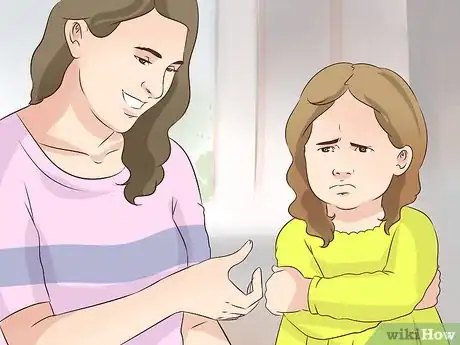


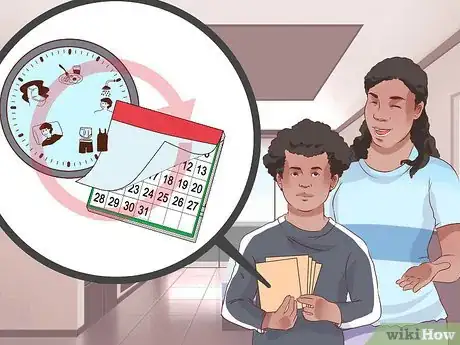

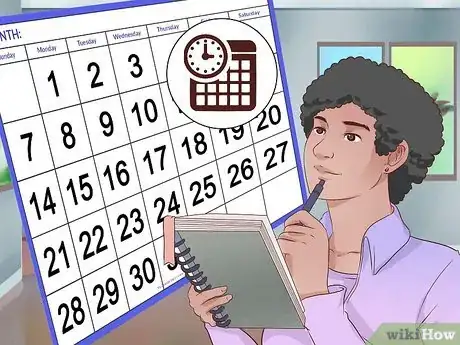
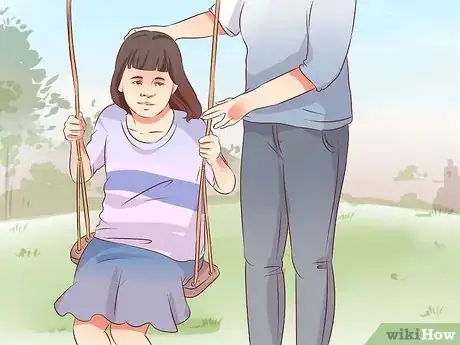

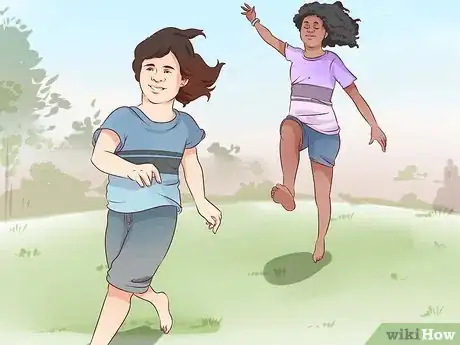



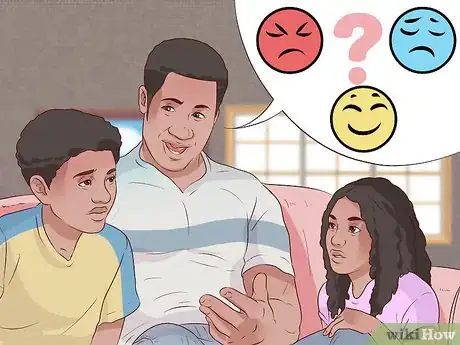

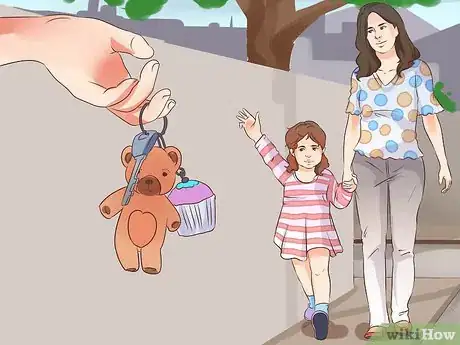

-Step-8-Version-2.webp)


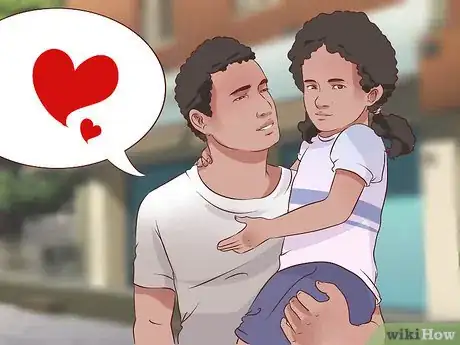

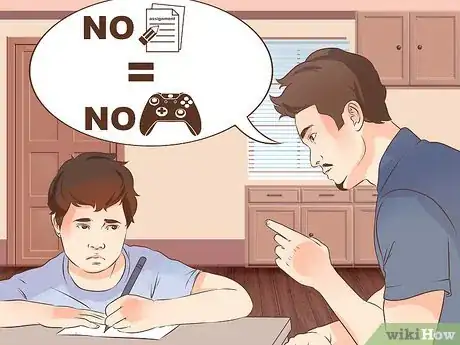


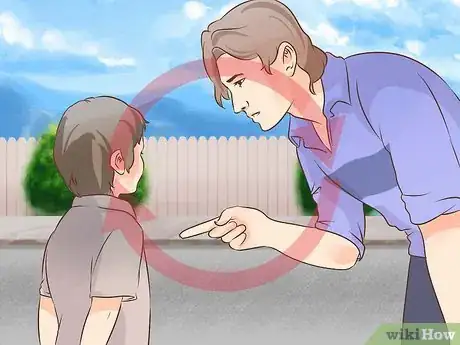
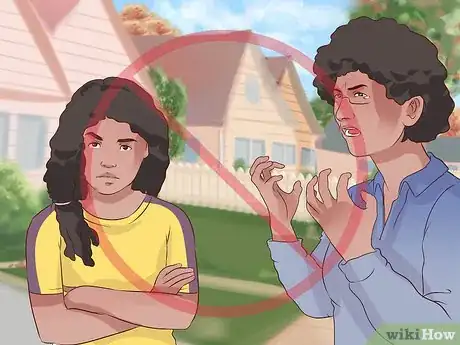
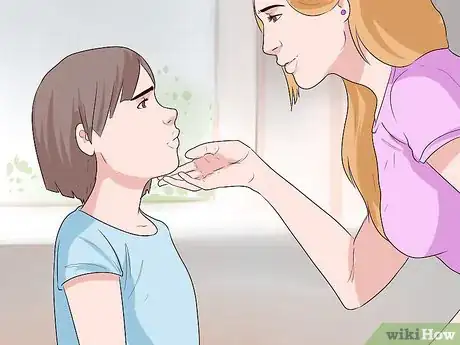
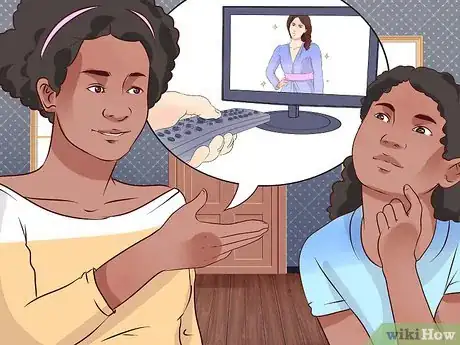
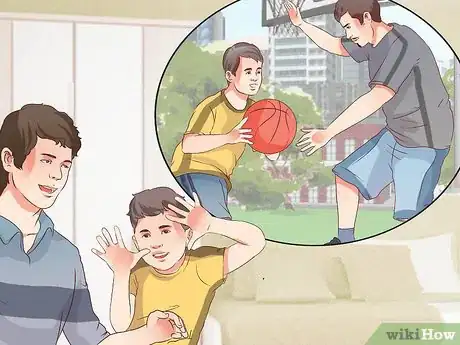
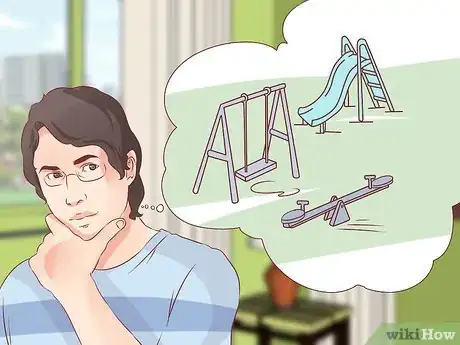
-Step-13.webp)

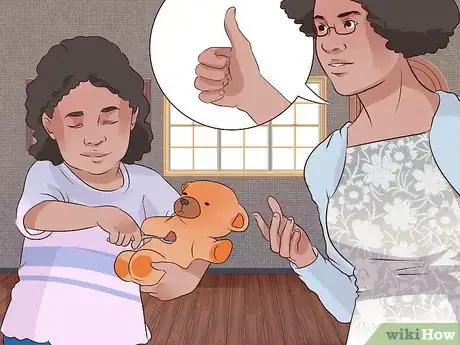
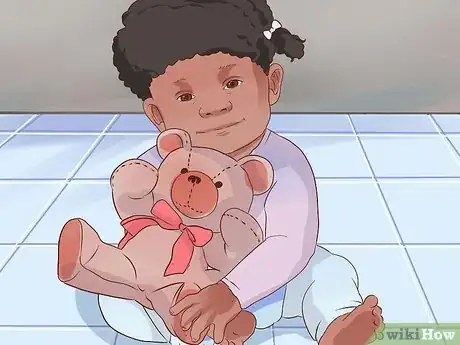
































































Medical Disclaimer
The content of this article is not intended to be a substitute for professional medical advice, examination, diagnosis, or treatment. You should always contact your doctor or other qualified healthcare professional before starting, changing, or stopping any kind of health treatment.
Read More...